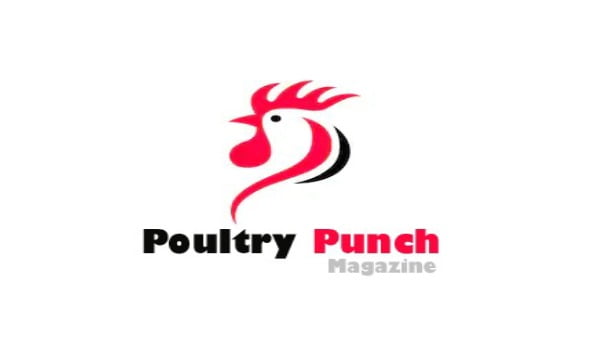ALTERNATIVES TO FORMALDEHYDE IN ANIMAL FEED FOR PATHOGEN CONTRO

Alicia Baz Montero
Marketing Manager Adiveter S.L.
Since the authorities banned the use of formaldehyde as a feed additive, Adiveter has been researching in the development of alternatives for this in European and Turkish market in order to keep a safe feed production. Form-ad Plus and Form-ad Plus P are liquid preservatives based on a specific combination of selected volatile short organic acids and their salts, medium chain fatty acids and essential oils.

Although formaldehyde is very effective reducing Salmonella contamination, it was classified as carcinogen and its use was banned by EFSA since 2017 in Europe and Turkey. The ban on formaldehyde allows formic acid and other blend of organic acids to be used as bactericides, being one of the most potent organic acids for reducing microbial load such as Salmonella, E coli, Clostridium and Campylobacter, according to scientific research.
More than 25 years back Adiveter’s leadership in feed safety. Since the authorities banned the use of formaldehyde as a feed additive, Adiveter has been researching in the development of alternatives for this in European and Turkish market in order to keep a safe feed production. Form-ad Plus and Form-ad Plus P are liquid preservatives based on a specific combination of selected volatile short organic acids and their salts, medium chain fatty acids and essential oils.
The specific combination of SCFA and MCFA in Form-ad Plus and Form-ad Plus P has synergistic effects in bacterial inactivation and animal performance. They reduce the bacterial load in raw materials and feed and protect them from further contamination. Thanks to lipophilic properties, MCFA destabilizes and damage the microbial cell membrane and increases the penetration of SCFA. SCFA can directly trigger the intracellular acidification of bacteria and inhibits their replication.
It is well demonstrated the antimicrobial effect of organic acids. While SCFA are more effective against gram-negative bacteria, MCFA have a greater effect on gram-positive bacteria. MCFA can also provide a protection against some viruses.
Form-ad Plus and Form-ad Plus P include nonanoic acid in their formula. It inhibits the growth of the bacteria by membrane disruption, involving mainly the disruption of electron transport chain and the interference with oxidative phosphorylation. The inner membrane of bacteria is an important site for energy production and it is where the electron transport chain is located.
Only a limited number of studies have investigated the roles of MCFAs like nonanoic acid (C9), particularly regarding intestinal epithelial barrier function. A study undertaken have revealed the role of C9 to increase and enhance intestinal epithelial immunological barrier function against bacterial translocation, being a method for preventing bacterial infections and intestinal disorders in animals. (Wang et al., 2018)
As we known, intestinal epithelium are important barrier to protect the host from virulent pathogens and reduce the number of intestinal virulent pathogens is beneficial to the health of the host. Epithelial physical barrier damage and immunological barrier damage are usually related to bacterial translocation during a pathogenic infection. (Wang et al., 2018)
It is also suggested that C9 has the capacity to induce the expression of pBD (porcine β-defensins) genes in some cells, including the pBD-1 (that plays a potential role in surveillance and maintenance of a homeostatic state of gut microbiota on the mucosal epithelium) and pBD-2 expression (that likely inhibits pathogenic bacteria). (Wang et al., 2018)
TRIAL REPORT
These experiments were carried out to show the efficacy and corrosivity of Form-ad Plus and Form-ad Plus P (synergic blend of short and medium chain fatty acids and essential oils), Salmocid-F (formaldehyde-based product) and two competitors: blend 1, a mixture of free organic acids (formic acid 75 % and propionic acid 25 %) and Blend 2, a mixture of free organic acid (formic acid 75 %) and ammonium formiate 25 %.
In order to analyse the bactericidal efficacy of Form-ad Plus and Form-ad Plus P, we analysed the % of reduction in Salmonella Tiphymurium (103 cfu/g) of Form-ad Plus, Form-ad Plus P and Salmocid-F at a dosage of 1 kg/T compared to blends 1 and 2 of organic acids at a normal dosage of 3 kg/T.
Form-ad Plus has the same effect than the formaldehyde-based product. Even at one-third dose, Form-ad Plus and Form-ad Plus P show higher bactericidal effect than blends 1 and 2.
In order to analyse corrosivity, we conducted a corrosion experiment, whereby test strips were immersed in different liquid solutions. Two parameters were analysed for corrosivity: test weight loss (%) and corrosion speed (mm/year).
It should be highlighted the low corrosivity of these Adiveter products compared to other products based on free organic acids. This allows for safe handling and prevents the product from corroding the feed mill equipment and facilities, making them available for using during feed processing.
We conclude that the high efficacy of Form-ad Plus and Form-ad Plus P are effective non-corrosive alternative solutions to formaldehyde-based products.







